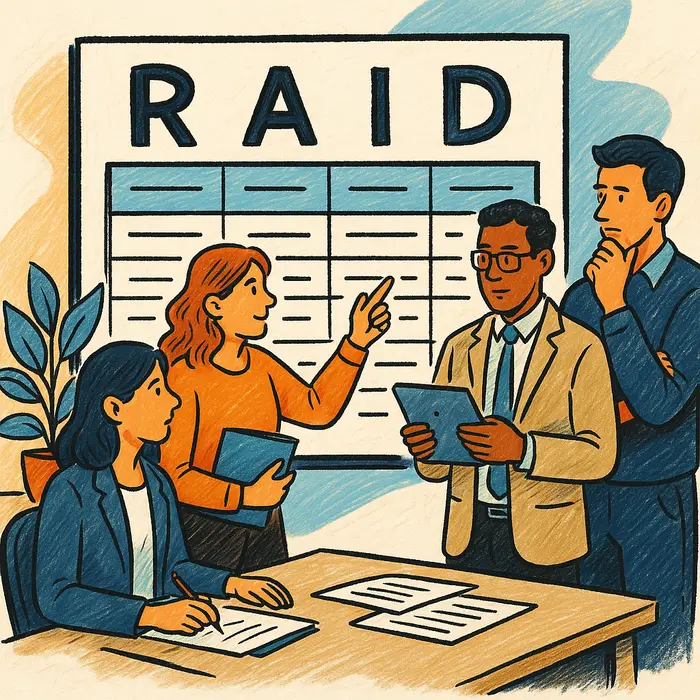Managing a project without tracking its risks, assumptions, issues, and dependencies is like sailing without a compass. You may move fast—but you won’t stay on course.
That’s where a RAID log comes in.
It’s a simple yet powerful tool that helps you surface and track what could derail your project—before it happens.
In this post, we’ll break down how to create and use a RAID log to stay focused, aligned, and in control.
What Is a RAID Log?
RAID stands for:
- Risks – Things that might go wrong
- Assumptions – Things you believe are true (but haven’t confirmed)
- Issues – Problems that are happening now
- Dependencies – Things your project relies on (or that rely on you)
Why Use a RAID Log?
- Keeps critical information visible
- Supports better decision-making
- Helps manage stakeholder expectations
- Enables proactive project management
Step-by-Step: How to Build and Use a RAID Log
Step 1: Set Up a Simple Table
You can use Excel, Google Sheets, or any project tool. Create a tab or section for each RAID element.
Basic columns:
- Description
- Owner
- Impact
- Status
- Action or mitigation
Step 2: Log Items Regularly
Use your RAID log actively:
- Risks during planning and throughout the project
- Assumptions at kickoff (and validate them later)
- Issues during weekly check-ins or standups
- Dependencies during task or milestone planning
Step 3: Review Weekly
RAID logs are not one-and-done:
- Review in weekly project meetings
- Update statuses and actions
- Escalate unresolved items
Step 4: Assign Owners
Every RAID item should have one clear owner:
- Responsible for updates
- Drives resolution
- Communicates status
Step 5: Use It for Communication
Your RAID log is a great tool for:
- Keeping sponsors informed
- Preparing project updates
- Supporting decisions when things change
Tips for Success
- Keep it short and focused—just the important stuff
- Don’t let it get stale—make it a living document
- Highlight high-impact risks/issues in red or bold
- Use filters to quickly find unresolved or high-priority items
Summary: Stay Ahead of Trouble
A RAID log doesn’t just help you manage problems—it helps you prevent them. By tracking risks, assumptions, issues, and dependencies clearly, you keep your project grounded and your team aligned.
Set it up at the start. Review it often. And use it to lead with confidence.
